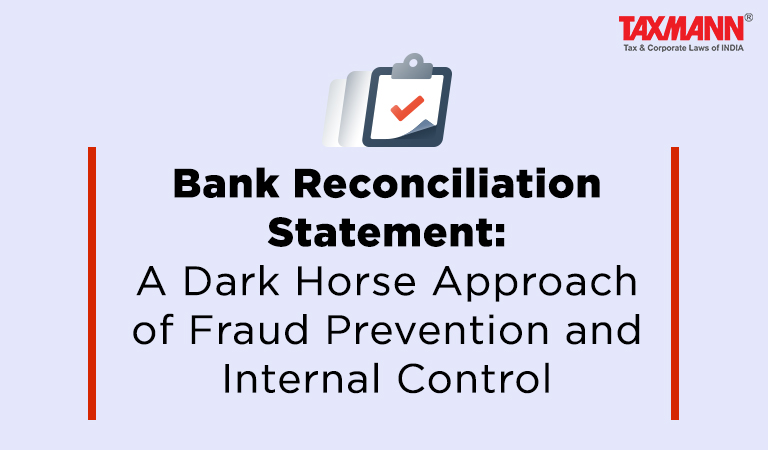Bank Reconciliation Statement: A Dark Horse Approach of Fraud Prevention and Internal Control
- Blog|News|Account & Audit|
- 2 Min Read
- By Taxmann
- |
- Last Updated on 28 February, 2022
Account reconciliation is a critical activity for a business, for it allows for the detection of fraudulent activity and the prevention of errors in financial statements. A reconciliation control is by definition detective in nature, detecting fraud, errors, and missing items.
One of the key concepts of reconciliation for any business is reconciling bank balance with that of books of accounts. For any business, the primary objective of bank reconciliation is to ensure that the recorded balance in books and the recorded balance in the bank match. Additionally, it assists in managing and monitoring the cash flow. Thus, by comparing the monthly statement received from the bank to the company’s internal accounting, bank reconciliations ensure that data between bank records and a business’s internal financial records are accurate and matching.
A conducive bank reconciliation system enhances the operational efficiency of financial reporting and helps prevent and detect frauds and errors in the disbursement system. This is largely important. Corporate funds can be easily embezzled, identifying the flaws in the payment disbursement system. A bank reconciliation is the system of reporting that compels a fraudster to think twice before initiating any malicious step against the organization for that he knows that the bank reconciliation will reveal not only the payments to fictitious vendors but also the fraudulently inflated payments to legitimate vendors and third parties.
A bank reconciliation is a critical control for many businesses, ensuring that data between bank records and a business’s internal financial records are accurate.
To Read The Full Story Click Here
Disclaimer: The content/information published on the website is only for general information of the user and shall not be construed as legal advice. While the Taxmann has exercised reasonable efforts to ensure the veracity of information/content published, Taxmann shall be under no liability in any manner whatsoever for incorrect information, if any.

Taxmann Publications has a dedicated in-house Research & Editorial Team. This team consists of a team of Chartered Accountants, Company Secretaries, and Lawyers. This team works under the guidance and supervision of editor-in-chief Mr Rakesh Bhargava.
The Research and Editorial Team is responsible for developing reliable and accurate content for the readers. The team follows the six-sigma approach to achieve the benchmark of zero error in its publications and research platforms. The team ensures that the following publication guidelines are thoroughly followed while developing the content:
- The statutory material is obtained only from the authorized and reliable sources
- All the latest developments in the judicial and legislative fields are covered
- Prepare the analytical write-ups on current, controversial, and important issues to help the readers to understand the concept and its implications
- Every content published by Taxmann is complete, accurate and lucid
- All evidence-based statements are supported with proper reference to Section, Circular No., Notification No. or citations
- The golden rules of grammar, style and consistency are thoroughly followed
- Font and size that’s easy to read and remain consistent across all imprint and digital publications are applied






 CA | CS | CMA
CA | CS | CMA


